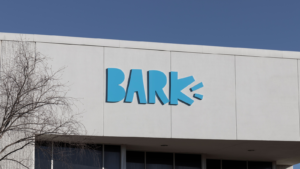Bears haven’t caught a break in more than five years, starting with the 2019 flash crash, which triggered predictions of a financial crisis on par with 2008. The early pandemic also looked bleak economically—until unexpected monetary policies drove stocks to new heights, highlighting clear growth stock opportunities. Then, the Federal Reserve’s shift in policy ramped up bearish sentiment, fueling recession fears and causing stocks to dip in 2022. The market has since recovered, reaching new all-time highs even amid renewed recent volatility.
Of course, this story of overall market resilience doesn’t apply to all stocks. In recent years, numerous stock scams, severe overvaluations, and irrational exuberance have come to light, resulting in the downfall of previously high-flying stocks as investors increasingly focus on financial fundamentals.
Despite their dire outlook, these struggling growth stocks persist. If you hold any of these stocks, it may be time to sell. If not, then these are definitely growth stocks to avoid.
Growth Stocks to Sell: Upstart Holdings (UPST)

Source: T. Schneider / Shutterstock.com
We can easily pinpoint the moment Upstart Holdings’ (NASDAQ:UPST) market value peaked. It wasn’t necessarily in terms of share price but during a now-infamous incident when stock trader Mark Minervini struggled to articulate what Upstart did, precisely, during a live interview. Ironically, this interview in mid-October 2021 coincided with UPST’s stock reaching its zenith at $390 per share on October 15th, 2021, before plummeting to about $20 – $25 per share today. Following the interview, Minervini quickly sold his stake.
Like other fintech and alternative lending stocks, such as Affirm, Upstart is floundering under the current high-interest rate environment. With the Federal Reserve taking a newly hawkish stance, a rate cut seems unlikely to salvage Upstart’s financial woes soon. In the fourth quarter of 2023, Upstart saw a 19% decline in loan origination compared to the same period the previous year. Additionally, its sales dropped by 4%, and the net loss for the quarter reached $55 million, worsening by more than $10 million from Q4 of 2022. While Upstart was initially fortunate to precede the artificial intelligence hype, some growth stocks just don’t high enough margins for new entrants to compete effectively, regardless of their touted “AI” capabilities.
Udemy (UDMY)

Source: II.studio / Shutterstock.com
While Udemy (NASDAQ:UDMY) may seem like a promising concept, the reality is that in an era abundant with free learning resources, expecting customers to pay for content they can access on YouTube or in books for free is impractical. Despite having some big-name corporate clients like AT&T (NYSE:T), larger companies are likely to ramp up their production of in-house training and coursework, directly competing with what Udemy offers.
Moreover, Udemy’s ability to retain existing customers raises concerns. The company reported a 13% increase in total enterprise customers and a 25% increase in recurring revenue in its latest quarterly filing. But that’s where the good news ends. Udemy also saw a 9% decrease in net dollar retention and a 10% drop in net dollar retention among large customers—defined as companies with 1,000 or more employees. These statistics suggest that companies often do not return for additional services after their initial needs are met, signaling potential challenges for the growth stock as it seeks to stand out in the crowded EdTech market.
Bark (BARK)

Source: Jonathan Weiss / Shutterstock.com
Subscription-based pet stock Bark (NYSE:BARK) fell victim to the SPAC-mania hype, with its value now just a fraction of its pre-merger high. Recognizing the grim reality of Bark’s financials and a weak value proposition, investors have lost confidence, though some still cling to the false hope that Bark remains a viable option instead of a stock to sell immediately.
Bark’s flagship product, BarkBox, succeeds best when households have ample discretionary income, a scenario not currently reflected in the economy. This misalignment has led to steadily declining sales over recent quarters. Bark has never turned a profit, which is a red flag for investors in today’s financial climate. The fascination with potential long-term growth without a solid fundamental foundation no longer attracts investors as it did back in 2021, making Bark a prime example of a stock whose valuation escalated too quickly and then plummeted.
The company missed forced delisting from main exchanges in March but, two months later, don’t expect the growth stock to hang on much longer.
On the date of publication, Jeremy Flint held no positions in the securities mentioned. The opinions expressed in this article are those of the writer, subject to the InvestorPlace.com Publishing Guidelines.

